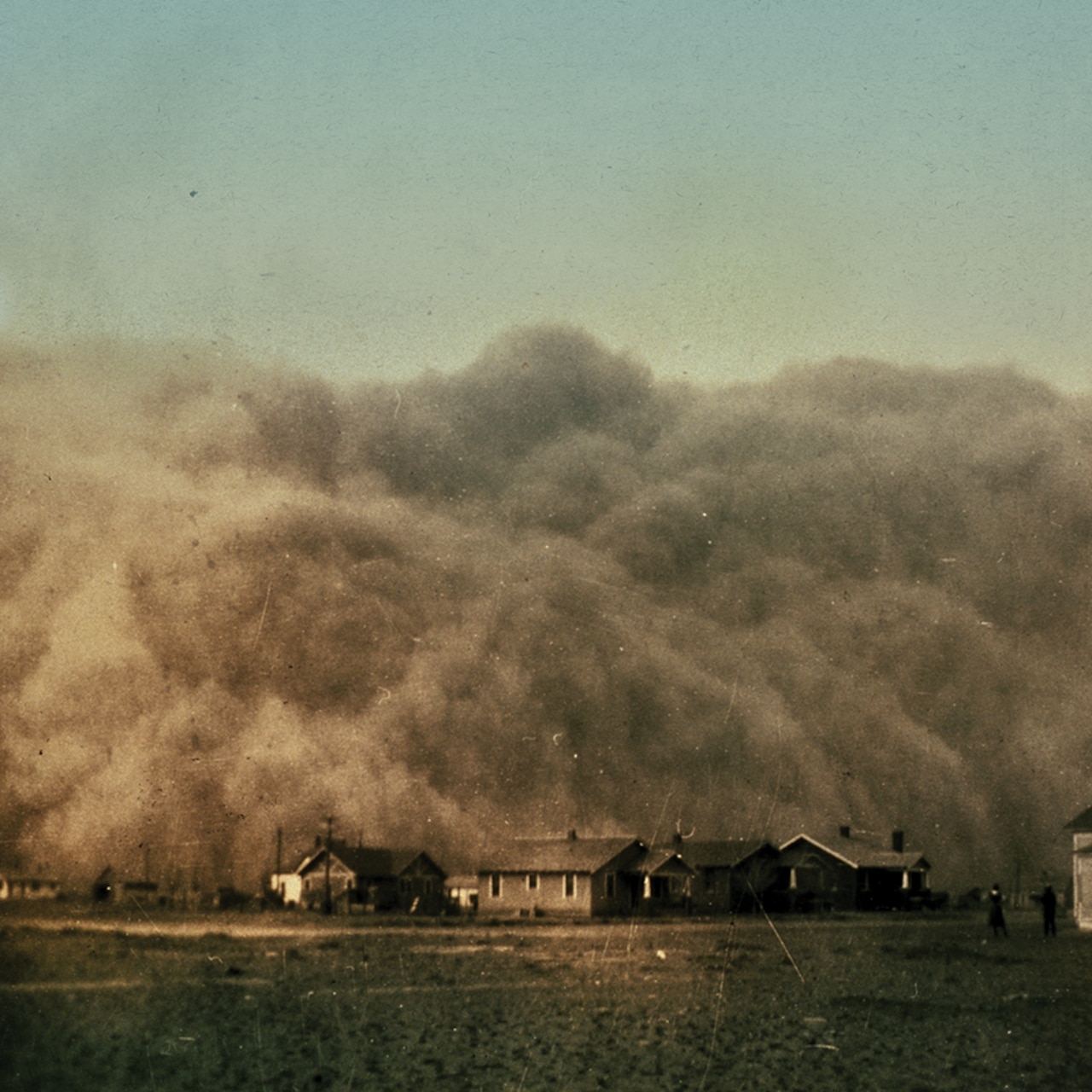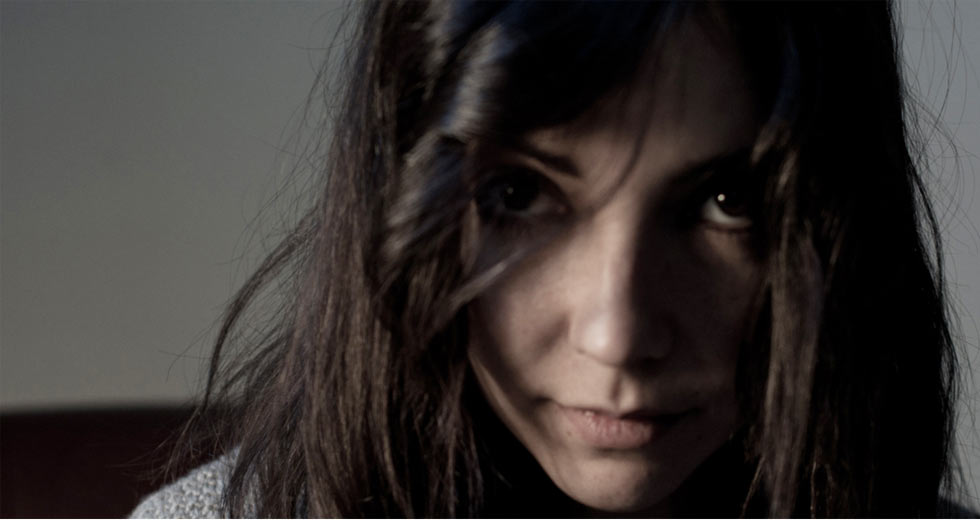Quiet Apocalypse: Lucrecia Dalt
Adam Harper speaks to Academy alum Lucrecia Dalt on her new album Commotus

I’ve seen what’s depicted on the cover of Lucretia Dalt’s new album Commotus in some of my worst nightmares. A billowing wall of dust, 50 feet high, surges towards the camera, dead on, moments away from engulfing a small collection of buildings. It’s a section of a photograph taken in the Texas Dust Bowl in 1935 during one of the dust storms or ‘black blizzards’ that made farming impossible across an area of the Great Plains stretching for a hundred million acres. Brought on by a malevolent combination of severe drought and improper long-term usage of topsoil, the Dust Bowl exacerbated the Great Depression and displaced hundreds of thousands of farming families. The scene on the cover is not just perennially apocalyptic but inevitably points to the second Great Depression threatening to overwhelm Europe, whose figures – bailouts, unemployment, national debts – are also on a scarcely imaginable scale.
Lucrecia Dalt is certainly feeling the gathering storm clouds from her home in Barcelona. “The crisis here has been shaking all aspects of society,” she explains, unprompted. “There’s a constant tension, changes in the mood of the city, in the graphic information. You suddenly realise how awkward the world has become, you suddenly start to think, ‘where’s the best place to leave your money?’ when you buy things. When I came to live in Barcelona, there was not the crisis there is now. The ambience has changed, the discussions on the streets – all of a sudden there was this imminent tension. I don’t feel the crisis has affected me and my group of friends directly, but the tension is constant and makes you re-evaluate behaviours, ways to continue.” Spain recently hit 24% unemployment and the country just received the largest ever bailout in financial history from the International Monetary Fund. For over a year, the country has been home to the ‘indignados’ movement that has inspired Occupy protests across the world. “I guess I have this fighting spirit, you know?’ she reflects. ‘To continue, whatever happens.”
But despite its sublimely wrathful cover, Commotus, whose title is a Latin word meaning ‘woken’, ‘agitated’ or ‘disturbed’, is an intimate, inward-looking and restrained album. Its creaking hallways echo with bathroom-tile and kitchen-sink effects emanating from occupied rooms, their peeling doors left ajar, revealing flashes of mirrors and wrought-iron bedposts within. If this album is apocalyptic, it’s the whispering stairwell in the apartment building housing the reluctant post-nuclear cannibals of Jean-Pierre Jeunet and Marc Caro’s film Delicatessen – introverted, insulated from the yellowing air outside.
Apart from two guest appearances, from Luke Sutherland and Julia Holter, Dalt spins everything out herself: soft singing, the lumbering drumkit, the drawling guitar, the alienated drum machine and an arsenal of effects that distance and estrange. In fact, I was amazed to hear that most of the pitched sounds on Commotus come from a bass guitar. “I wanted to be able to use the bass as the main source of sound, [which meant] expanding the register – even though it’s an instrument with a very limited register – through processing.” The processing unit that became “the essence of the record” was Dalt’s Moogerfooger, an analogue effects pedal whose more outrageous sonic consequences establish the album’s link with the experimental pop of the late 1970s and early 80s.
I am not thinking of a style when I start to record, I am thinking of a state, a path to being in a mood.
Dalt says she recognises Felix Kubin in “Multitud”, and the Eskimo-era Residents in “Esplendor”. The 43 second sketch “Jet” could have been one of the miniatures on the latter’s 1980 concept project The Commercial Album; one of Dalt’s most elegant achievements is to make the deliberately excruciating Dada humour of the Residents into one of her album’s most alluring affectations. I also smell the bitter perfume of that other San Francisco art pop band, Tuxedomoon, whose nocturnal erotics and absurd glances are folded discreetly into Commotus’s dark love letter. It’s not a case of simple referencing though: “I am not thinking of a style when I start to record, I am thinking of a state, a path to being in a mood,” she declares. And she’s right when she also claims that she hasn't merely occupied a particular past out of nostalgia. She builds a vertiginous awareness of layers of the past, passing down through post-punk to musique concrète, to the “orchestral hits of Perez Prado” and even reaching “some essence of old boleros”. Dalt, who is a civil engineer, explains that she “was thinking of how geology works, strata – like some part of the depths could spring again and change narratives, and even though some parts could belong to other depths, it still works.”
The title of Commotus’s first track, “Saltación”, expresses this temporal, archeological relativism perfectly: saltation is the process by which different layers of sand grains are distributed by the wind over time, causing the smallest particles – dust – to hang in the air for the longest time. Another track is named “Escopolamina” after a nightmarish drug found in Dalt’s homeland of Colombia, which causes the user to be entirely in the power of others – its victims have been known to willingly hand over all their possessions to the people who spiked them, even to empty their own bank accounts at cash machines. “For this album it was important to try to imagine a place that each song is trying to occupy,” Dalt explains. “I inevitably started thinking about making songs that occupy a certain space, sometimes a small dimensional space, sometime just an image”.
Luke Sutherland told Dalt he felt these spaces were ‘haunted’, but Dalt thinks it’s more complicated than that. “I don’t know if they’re haunted,” she says, “but sometimes I just feel trapped in a certain image, or state, and the song should be developed in order to continue life.” As the uppermost, most immediate layer of life is scooped up by the ill wind and whipped up into a furious incoming storm, Commotus is frozen between the continuance of life and the ghost of death, half-dead already because the end is nigh, forced to excavate the deep earth at its feet for any solutions it can. Before we can manage to see whether it’s building a bunker, planting a new crop or digging a grave, the dust cloud rolls in.
Commotus is released on June 19th via HEM (formerly Human Ear Music).

